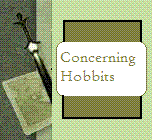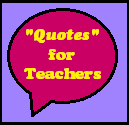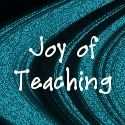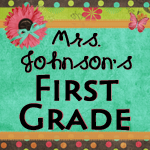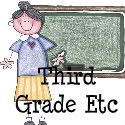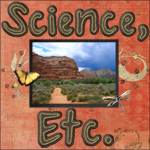Just got a very cool video from Steve Spangler. It is a hovering paper airplane. To watch the video just follow this link:
Floating Paper Airplane
Another neat airplane trick that I like to do in my science class is the Ring Wing Glider. I usually ask a student to stand back to back with me and their job is to tell me the procedures for making a paper airplane. We both have paper etc. They start folding their paper airplane and giving me instructions and I pretend to follow their directions. Actually, though, I am follow my own instructions for the Ring Wing Glider. The student usually ends up with a regular looking airplane that actually looks like an airplane and I end up with something that looks like a circle. It is actually a wing that flies but they don't know this. They fly their airplane and it usually flies ok. I fly my silly looking circle thing and it flies across the room. Very fun and gets all kinds of laughs. It is something of a discrepant event actually. If you would like to try this in your classroom go to this link for instruction on the Ring Wing Glider:
Instructions for the Ring Wing Glider
Scroll down until you find it on the page.
You will have to practice before doing this in front of a class, however:)
NASA also has instructions for students in a pdf format. You can search for ring wing glider and these will also come up. Have fun!
Wednesday, March 30, 2011
Saturday, March 26, 2011
Make a Quake
It seems that the Make a Quake website is still operational. I have written an assignment to go with this website for my class. It basically walks students through a simulation. Students can choose what ground they want their building to be built on. They can also choose the type of prevention to be built into their building and the magnitude of the earthquake. They then cause an earthquake to happen and see how their building held up. Tsunamis and other dangers are also addressed in the simulation. A very timely activity indeed. If you are interested in this fun activity for your class pay a visit to my store at this link:
Make a Quake
Make a Quake
Labels:
products
Monday, March 21, 2011
Informational Text Homework
This is the time of year we all get a little frantic about state testing. Generally, being the science teacher, I am pulled into helping reading and math at this time as they are tested subjects in Arizona. I try to use informational scientific text to supplement what our reading teacher is doing. Sometimes, yes, I give homework. Homework this time of year is directly related to our state testing. Here is a link to a homework assignment on Teachers Pay Teachers. It is practice on informational text structures. More specifically it addresses the text structures sequence and comparison/contrast. It also has a link to a website where you can put chronological events on a time line.
text structure homework
text structure homework
Labels:
products
Sunday, March 13, 2011
Japan Earthquake and Tsunami
Well it never fails. I start my plate tectonics unit and there is a very distructive earthquake that occurs. Last year it was Haiti. My father, who travelled to Japan on business for I.B.M. tells me that the Japanese are very prepared for an earthquake. Unfortunately, it seems that there is no real way to prepare for a tsunami. It is a very sad situation. My class really had a hard time seeing footage of cars that were travelling on a road seemingly unaware of the wall of water and debris coming right at them.
For those of you who want to know more about how a tsunami forms here is a good site.
This site actually has a science experiment about water depth and wave velocity. It also has a national geographic video about killer tsunamis. Probably not something I would show in class as it has people being swept away.
Science Buddies
For those of you who want to know more about how a tsunami forms here is a good site.
This site actually has a science experiment about water depth and wave velocity. It also has a national geographic video about killer tsunamis. Probably not something I would show in class as it has people being swept away.
Science Buddies
Friday, March 11, 2011
St. Patrick's Day Fun
Most the time I am teaching science and designing lessons for my earth science classroom. Occasionally, I tutor younger children in reading. I also run interventions for some of the "non-readers" in our school. In my case, my own daughter falls into this group. Actually, she used to fall into this group until I started really working with her. Subsequently, I have a few fun activities for K-1. I guess you could call it the "etc." in Science Etc. One of them happens to be St. Patrick's Day sight words and syllables games. These two games are fun for younger children just learning to read. They also may be something to send home for practice. Here is the link:
St. Patrick's Day Sight Words and Syllables
St. Patrick's Day Sight Words and Syllables
Labels:
products
Tuesday, March 8, 2011
Pangaea
One way to get students to understand how the shape of coastlines and land features could be a clue to the movement of continents is to have them create their own landmass. Students draw an outline of a landmass on a piece of paper. They then fill in rivers, lakes, mountains, and other features. The landmass is cut out and then torn into several pieces. The pieces are given to another student to put back together. Students figure out what clues helped to fit the pieces back together, and what lands on a world map seem to fit together. This is a great activity to introduce plate tectonics.
Friday, March 4, 2011
Picture Notes
One of the best ways to teach plate tectonics is with picture notes. The teachers draws, the students draw, and everyone understands. One site that I have found that has great picture notes for plate tectonics is:
http://geology.com/nsta/
Click on plate tectonics guidebook in the text underneath the picture. Drawing pictures to teach plate boundaries and subsequent landforms is the easiest way I know to get the content across. I used to draw these on my white board while I discussed each picture. I have since gone to a powerpoint but I don't think it has the same effect as drawing them by hand. Your students will understand plate boundaries much easier if you try it this way.
http://geology.com/nsta/
Click on plate tectonics guidebook in the text underneath the picture. Drawing pictures to teach plate boundaries and subsequent landforms is the easiest way I know to get the content across. I used to draw these on my white board while I discussed each picture. I have since gone to a powerpoint but I don't think it has the same effect as drawing them by hand. Your students will understand plate boundaries much easier if you try it this way.
Wednesday, March 2, 2011
Steve Spangler Science
Well I didn't really get to do my very cool plate tectonics powerpoint today because my technology failed. I have my prep hour first so of course it failed after that. Good thing my husband works in the tech department at my district. It was finally going again after classes were over. Thank goodness for early releases! We only had 40 minute classes today.
One thing that my students just love, when technology is working, is Steve Spangler. He is very motivational for the middle school science class. We can get Utube for class and he is on the Ellen Show on Utube. Some of his stuff borders on descrepant events which I discussed on an earlier post. I like to start my class off with something showy to get us all in the mood for science. I swear it works wonders. Here is a Steve Spangler illusion that my class loved. If you can project it (if your technology is working) you can not only make the dots disappear but also your students will see green dots at the end. It is very cool.
optical illusion heart
Subscribe to:
Posts (Atom)



